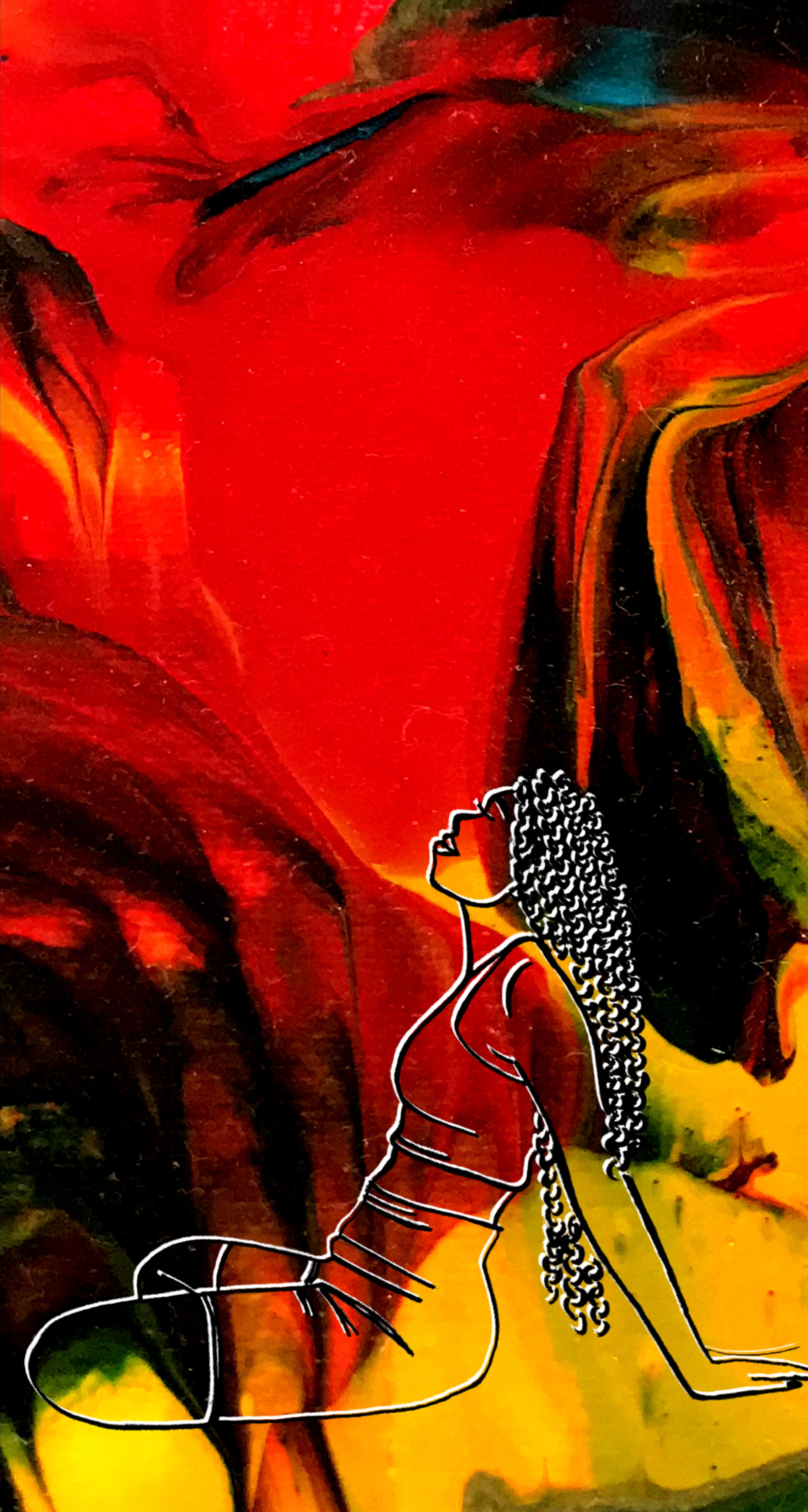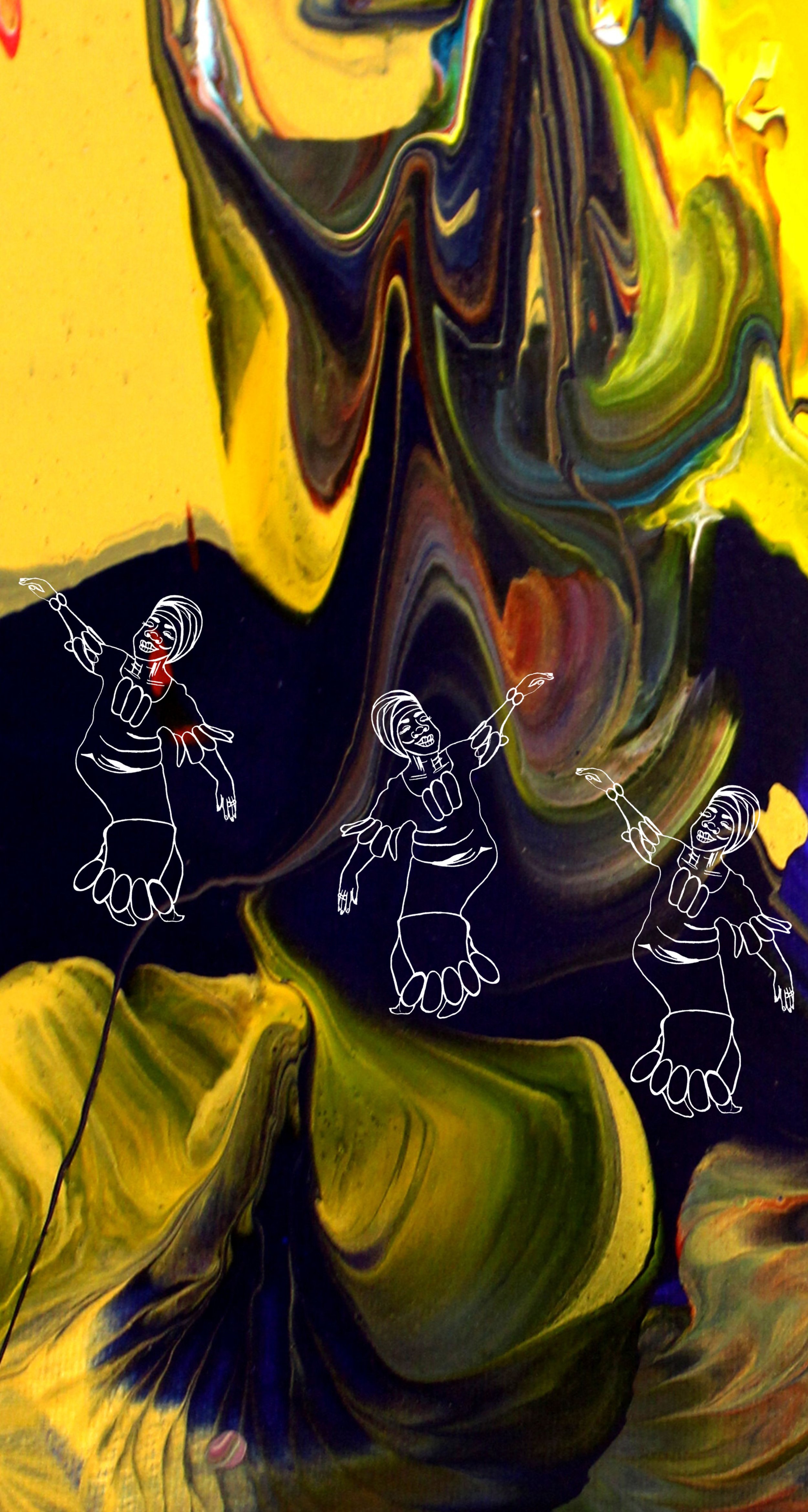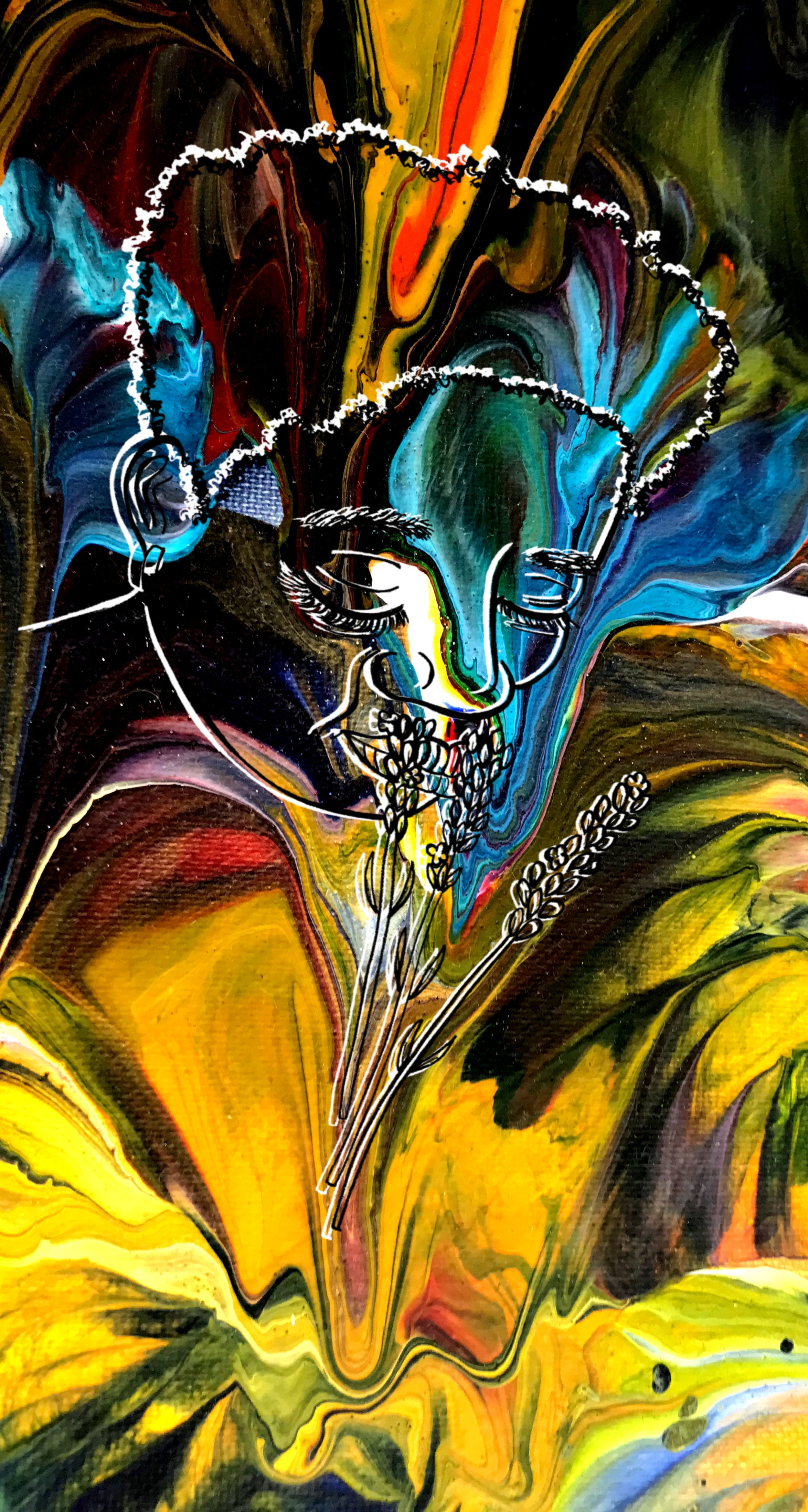Black Womxn at Rest
In collaboration with Kensington and Chelsea Art Week, Black Blossoms is proud to present ‘Black Womxn at Rest, ’ a captivating mural created by artists Bokani and Birungi Kawooya. This thought-provoking mural challenges societal expectations and encourages a much-needed dialogue on the importance of rest and self-care.
Join us as we delve into the creative process behind this remarkable artwork and explore the impact of public art in fostering vibrant, inclusive, and empowered communities.
Bokani and Birungi Kawooya: ‘Black Womxn at Rest’ mural on Freston Road. ©James Marshall
What inspired the creation of this mural, and what message do you hope it conveys to the community?
Bokani: In a time when many people, particularly Black womxn, struggle to make ends meet, rest can seem like an indulgence. Through this mural, we hope to convey that rest is not a luxury but a necessity for survival and resistance. In a world that constantly demands our labour, bodies, and emotional energy, rest is a form of resistance that allows us to reclaim our power and reconnect with ourselves and our communities.
We wanted to create a visual feast about rest, showing various types of rest available and inviting passers-by to see themselves in some of these postures. Our aim was to offer an opportunity to find something new every time one encountered the mural. "We rest" is not just a statement but an affirmation and a call to action to embrace the power of rest.
Birungi: I began a body of work called "Sisters Need Sleep" when I realised I had been complicit in dehumanising myself by repeatedly persisting to work in toxic environments while clinically unwell with anxiety and depression. I hope all Black womxn can support each other and themselves in prioritising rest and care.
Can you describe the artistic process behind creating the mural, from initial concept to final execution?
Bokani: The artistic process for creating the mural was a dynamic and collaborative journey, beginning with an in-depth exploration of how rest has been envisioned and experienced by Black Womxn. We considered the body as a site and sanctuary for rest and relaxation. The community workshops, where women shared their personal experiences and insights, helped us create a more resonant artwork. As a team, Birungi, Bolanle, and I exchanged diverse inspirations from various sources, such as pop culture, art history, literature, and social media, to develop a unique visual language for the mural. We each contributed our individual artistic styles, allowing for a rich and dynamic fusion of creative perspectives The final execution of the mural showcases a vivid, intuitive, and abundant approach, reminiscent of my own painting style. The mural serves as a platform for the womxn to claim their space and find rest, ultimately reflecting our shared vision and the community's input.
How did the collaboration process work between you, and what challenges did you encounter during the project?
Bokani: As most of the work was done remotely, we found ways of sharing images, ideas, and inspiration digitally over several weeks. I particularly appreciated our dedication to delivering something honouring the community, which kept us striving towards a beautiful result. Towards the end of the project, we were able to work together, albeit remotely, to refine the mural designs and make final choices for the drawings. The trust we all held in each other, respect for different practices, clear communication, and this common goal provided a strong collaborative foundation.
Birungi: I can't quite articulate the "how", but our mutual respect, friendship, and deep commitment to anti-racist, sexist, and capitalist practices provided the respect required to co-create our mural.
How does this project fit into your artistic vision and practice, and what did you learn from this experience?
Birungi: I make work centring Black womxn at rest to counter the ingrained capitalism, white supremacy, ableism, and sexism in me and support my wellbeing. By collaborating with Bokani and Bolanle, I got to embody these ideals, and we held each other to account! In doing so, I learned how rest is different for others and how people want to be supported, often different from what I assumed people needed.
Bokani: Throughout my creative journey, I have been striving to use my art as a tool for social change and to provide a sense of empowerment to those who encounter it. I have been working on billboards that aim to create moments of beauty and inspiration, drawing inspiration from Black, feminist, and liberatory thought. Through this project, I learned the importance of taking up space unapologetically and not hiding or cowering from the world. By using vivid and bold painterly language, I hope to instil a sense of confidence and empowerment in those who view my work. This experience has taught me that art has the power to create positive change and can serve as a source of inspiration and hope for others. I am grateful for the opportunity to continue to pursue my artistic vision and contribute to the betterment of society through my work.
How do you see the mural fitting into the larger public art landscape, and what role do you think public art plays in creating vibrant and inclusive communities?
Bokani: Public art often gives me the confidence to be in the world more fully. Public art offers an invaluable platform for shared experiences, particularly in this era when our attention is often drawn to individual screens and isolated pursuits. By providing shared experiences and promoting understanding among diverse individuals, public art fosters a sense of connection and belonging that is essential to our collective well-being.
Birungi: Last summer, I painted a community globe for The World Reimagined national art trail, "Peckham in Bloom," which depicts local Black women resting in nature. With our mural, we have created another site of rest—a physical space where people are encouraged to pause, breathe, and enjoy Black womxn at rest.
Looking back on the project, what was the most rewarding aspect of it?
Bokani: I loved the opportunity to share my practice with women from the community. I found immense joy in witnessing the participants fully immersed in their painting, experiencing the same flow state that I often cherish, allowing them to escape their daily worries and concerns momentarily. Being in the presence of Birungi's work has always felt like coming home, with its familiar, accepting, and welcoming aura that infuses the mural with a sense of hospitality. Throughout the project, the moments when each panel seamlessly came together were incredibly gratifying, especially when we stepped back to admire the completed work.
Birungi: I've always wanted to be in Bokani’s paintings, as they are meditative, unpredictable, and represent myriad ways of being. For me, our collaboration is an important step in my community arts practice, and I'll never forget how joyous our workshop at Golborne Children Centre was and how our conversations have stayed with me and become a part of our mural.
Artist Bokani and Birungi Kawooya in front of ‘Black Womxn at Rest’ mural on Freston Road. ©James Marshall
About the Artists:
Bokani is a multi-disciplinary artist involved in multiple mediums that address climate justice and integral ecology. Chiefly concerned with our complicity, her works elicit a new response to nature and the patterns of our interconnectivity. The ethics and liberatory capacities of Black feminist protest and thought to underpin her practice as an artist and her belief in the transformative capacities of art. Her practice encompasses abstract painting (including mixed-media works exploring the possibilities of clay and stain glass), drawing, photography, digital art, installations, and street art.
Bokani, a Zimbabwean born and raised and now living and working in London, has a BSc in Politics and Economics from the University of Bath and a Masters in Computational Art from Goldsmiths College. She previously participated in BBC1’s The Big Painting Challenge and won the public vote in the first week.
Birungi Kawooya is a collage artist and tutor who is inspired by nature, Black womxn and the ingenuity of dance from the African diaspora using batik, paper, paint and sculpture. Her works celebrate Black womxnhood, elevating rest, joy and well-being. In 2020 she reflected on how Black womxn are pivotal in leading social justice movements, and she started the collection “Sisters Need Sleep”; the body of work invites Black womxn to rest and reimagine an equitable society for all.
Birungi leads mindful African art programmes and creates spaces to help people work through anxiety, stimulate their imagination, and connect to vibrant African textiles. Her presentations and talks help people understand the connection between art and storytelling as she explores themes of African diasporic identity, authenticity, and well-being.
Birungi is currently on an art residency in Uganda with 32 Degrees, formerly the Ugandan Arts Trust. She is exploring natural fibres ahead of a group exhibition at the Makerere University art gallery, with the support of the Arts Council England and Njabala Foundation. Her art will portray themes of trauma resolution, time travel, well-being, and sculptural installations to invite womxn to rest.
This project is funded by Untold Stories, part of the Mayor of London’s Commission for Diversity in the Public Realm.
About the Commission for Diversity in the Public Realm
The Commission for Diversity in the Public Realm, set up by the Mayor of London in June 2020, reviews the landmarks that currently make up London’s public realm, furthers the discussion into what legacies should be celebrated, and makes recommendations aimed at establishing the best practice and standards. It is wide in scope and considers murals, street art, street names, statues and other memorials. It is co-chaired by Deputy Mayor for Social Integration, Social Mobility and Community Engagement Debbie Weekes-Bernard and Deputy Mayor for Culture and Creative Industries Justine Simons OBE. It comprises arts and community leaders from across the capital and historians. It works alongside a Borough Working Group of local councils and a Partners Board, including ActionSpace, Art Fund, English Heritage and Shape Arts, Arts Council England, Black Cultural Archives, Historic England and Iniva (Institute of International Visual Arts). Following his support for the installation of a statue of suffragist leader Millicent Fawcett in Parliament Square in 2018, Sadiq and his senior team have held discussions with council, community and arts leaders across the capital to assess the best way to improve diversity in the public realm.






